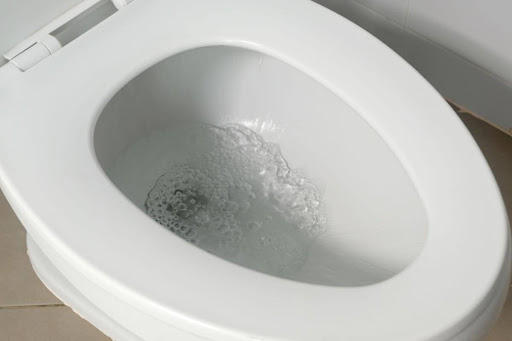
A running toilet isn’t always obvious at first. Maybe you hear a faint trickling sound long after you’ve flushed or notice the water in the bowl shifting when no one has used it. You might even get an unpleasant surprise when your water bill is higher than usual. No matter how you realize your toilet won’t stop running, one thing’s for sure — you want it fixed fast.
Ignoring a running toilet can waste gallons of water every day, costing you money and potentially leading to bigger plumbing problems. The good news is that, in most cases, the fix is simple and doesn’t require professional tools or plumbing experience. Let’s go over how to fix a running toilet, what the common causes of a running toilet are and when it’s time to call in a plumber.
Common Causes of a Running Toilet
Before you start fixing anything, it helps to know what’s causing the problem. A running toilet usually happens because one of the components inside the tank isn’t working properly. Here are some of the most common causes of a running toilet.
A Worn-Out or Misaligned Flapper
The flapper is a rubber seal that sits at the bottom of the tank. When you flush, it lifts to let water flow into the bowl, then seals shut once the tank refills. If the flapper is old, cracked or not sitting correctly, water will continuously leak into the bowl, causing your toilet to run.
A Faulty Fill Valve
The fill valve controls how much water flows into the tank after a flush. If it’s not shutting off when it should, the water will keep running. Sometimes, debris or mineral buildup can prevent the valve from sealing properly.
A Problem With the Float
The float is what tells the toilet when to stop filling the tank. If it’s set too high, the water level will rise above the overflow tube and keep running. If it’s too low, your toilet might not flush properly.
An Issue With the Overflow Tube
The overflow tube prevents the tank from overflowing, but if water is constantly draining into it, your toilet won’t stop running. This can happen if the fill valve is set too high or the tube is cracked.
A Loose or Broken Chain
The chain inside your tank connects the flush lever to the flapper. If it’s too short, the flapper won’t close completely, letting water continuously leak into the bowl. If it’s too long, it might not lift the flapper properly when you flush.
How to Fix a Running Toilet
Now that you know the common causes of a running toilet, let’s go step by step to fix it.
Turn Off the Water Supply
Before you do anything, locate the water shut-off valve behind your toilet. Turn it clockwise to stop the flow of water. This will prevent any mess while you work.
Remove the Tank Lid and Inspect the Components
Carefully lift off the lid and place it on a flat surface. Look inside the tank to see if anything looks out of place. You might immediately notice a tangled chain, a stuck flapper or water flowing into the overflow tube.
Adjust or Replace the Flapper
If the flapper is the problem, try adjusting it so it sits properly over the flush valve. If it looks old or worn out, replacing it is fairly easy. Simply unhook the old one, attach a new flapper and test the flush.
Check the Fill Valve
If water is continuously running into the overflow tube, adjust the fill valve by turning the screw on top. Lowering the water level just below the overflow tube should stop the running water. If that doesn’t work, the fill valve might need to be replaced.
Adjust the Float
If your float is too high, it’s allowing too much water into the tank. Adjust it by either bending the metal arm slightly downward or, if you have a modern toilet, turning the adjustment screw. This will lower the water level and stop excess water from entering the overflow tube.
Check the Chain
If the chain is too short or tangled, lengthen it slightly so the flapper can close completely. If it’s too long, shorten it so it lifts the flapper properly when you flush.
Turn the Water Supply Back On and Test
Once you’ve made your adjustments, turn the water supply back on and let the tank refill. Flush the toilet a few times to see if it’s working correctly. If the running water has stopped, you’re good to go.
Signs You Need a Professional Plumber
Sometimes, no matter how many DIY fixes you try, the toilet keeps running. Here are a few signs it’s time to call a plumber:
- You've tried all the fixes, but your toilet still won’t stop running
- Water is leaking onto the floor around the toilet
- You suspect a bigger plumbing issue is at hand
- The toilet is making strange noises even when it’s not in use
Gillece Services can help with a running toilet and clogged toilet repair in Pittsburgh, PA, as well as other plumbing services. Sometimes, it’s just easier to let a professional handle it instead of wasting time and getting frustrated trying to fix it yourself.
Save Water and Avoid Bigger Problems
A running toilet might not seem like a big deal, but ignoring it can cost you a lot of money on your water bill. Even a small leak can waste thousands of gallons over time. Plus, constant moisture can attract pests and lead to humidity issues.
Fixing a running toilet is a great home improvement project that can save you money and help conserve water. But if you’ve tried everything and your toilet still won’t cooperate, don’t hesitate to ask for help.
Need Help in Pittsburgh, PA? Call Gillece Services Today!
A running toilet can waste a lot of water and increase your bill, but in most cases, the fix is simple. By following the steps in this guide on how to fix a running toilet, you can troubleshoot and repair the issue yourself. If the problem persists, it might be time to call an experienced plumber for assistance.
If your toilet keeps running and you’re tired of the troubleshooting, call the pros at Gillece Services. Our plumbers are familiar with the common causes of a running toilet and will make sure your toilet is fixed right the first time. Schedule your plumbing services in Pittsburgh, PA, or one of the surrounding areas today!





